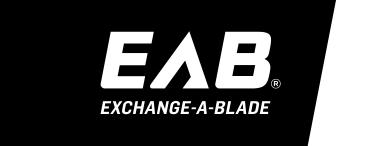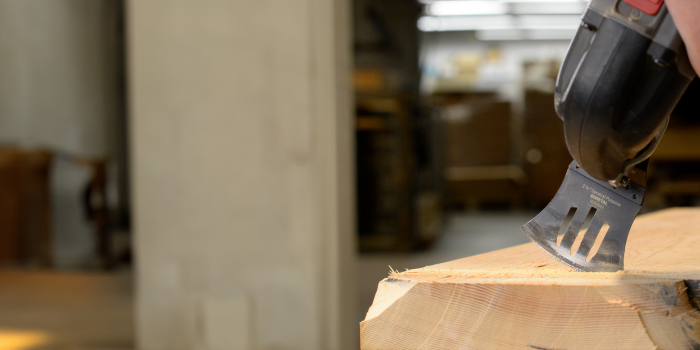How to extend the life of a diamond hole saw
2018/07/17
The life and effectiveness of a diamond hole saw varies greatly based on the material being cut, the amount of lubrication used, the tools that are used and the technique of the operator. In order to maximize the life of the hole saw, these important notes should always be followed:
LUBRICATION
Always use plenty of water when using a diamond hole saw. The water is used to keep the hole saw cool and wash away any slurry generated. The point of contact between the cutting surface and the hole saw should always be wet and the hole saw tip should never be hot. If the tip is ever more than just warm, it is generally an indication of too little lubrication (or possibly too much speed or pressure). The water reduces heat build-up, prolonging hole saw life, and helps avoid heat fractures in the material. Minimal lubrication will keep the hole saw from burning up, but very good lubrication techniques will extend hole saw life by a factor of five or even 10. Also note that oil based lubricants do not work well on diamond hole saws. (See below for more detailed information.)
PUMPING TECHNIQUES
When drilling holes with a diamond hole saw, ALWAYS use a pumping technique. This technique involves easing the hole saw into the cutting surface or hole, then pulling the hole saw back to allow water to penetrate the cut, then easing the hole saw back down again (every 15 to 20 seconds or so). The water will flush out slurry that has been generated and will make sure the contact point between the surface being cut and the diamond hole saw remains lubricated. Without the pumping technique, the water will not reach the very tip of the hole saw even if the hole saw is under water.
DRILL SPEED
Since all materials vary in hardness and abrasiveness, it is impossible to determine exact drill speeds. It is suggested that users follow the recommended drilling speed, or go even slower if they are not sure about the material being cut. A faster drill speed or increased pressure may reduce the cutting time slightly, but it will also increase the friction significantly and heat up the hole saw. This will reduce the hole saw life considerably and increase the risk of heat fractures and material breakage. If a hole saw develops yellow, brown, blue or black 'burn marks' around the tip, it is an indication of extreme heat and that the drill speed being used is too fast or the amount of pressure on the drill is too great.
DRILL PRESSURE
When using a diamond hole saw it is very important to have only light to medium pressure on the drill and to let the hole saw "drill at its own speed". Increasing pressure will not speed up the cutting noticeably, but it will increase the friction considerably and quickly cause the hole saw to overheat. This not only burns up the hole saw, but it also heats up the surrounding surface and can cause heat fractures or breakage to occur. If a hole is being drilled completely through a piece of material, it is also important to "lighten up" considerably on the pressure when the hole saw is near the back of the material. This reduces chipping or fracturing on the back of the material when the hole saw emerges from the back.
TOOLS
As speed is such an important factor when it comes to the operation of a diamond hole saw, it is recommended users use a variable speed drill. NEVER should an ‘impact driver’ or ‘hammer drill’ be used with a diamond hole saw, as this will cause the tip of the hole saw to mushroom or split. When using a hole saw over ½”, it is preferable to use a drill press rather than a hand drill when a template is not available.
MATERIAL BEING CUT
The life of any type of diamond hole saw depends upon the hardness, abrasiveness, and thickness of the material being drilled and the specific drilling techniques used (drill speed, pressure and lubrication); however, the diamonds of a hole saw don't usually wear out as often as they wear off due to heat and friction caused by the extreme hardness and abrasiveness of the material being cut. By employing the strategies listed above, a user can considerably extend the life of his/her diamond hole saw. It should also be noted that in some very hard stones and tiles, it may take 2-3 minutes to drill only ¼”.
Recap: how to extend the life of your diamond hole saw
- ALWAYS use plenty of water
- ALWAYS use a pumping technique
- ALWAYS use the recommended drill speed or use a slower speed
- ALWAYS let the hole saw cut at its own speed, do not apply too much pressure
- NEVER use an ‘impact driver’ or ‘hammer drill’; a variable speed hand drill or drill press is recommended
- SPEED KILLS—optimal drill speeds, low drill pressure, and increased use of water will extend hole saw life considerably.
Lubrication tips and techniques
Various kinds of very specialized industrial water feed equipment are available for industrial production type work. But, when drilling with diamond hole saws, the primary concern is merely getting enough water lubrication on the cutting edge of the hole saw, no matter what method is used. All lubrication methods are not equal. Since good lubrication extends hole saw life considerably, below is a rating of the various methods.
|
Hole Saw Lubrication Method |
Rating (1 poor - 10 good) |
|---|---|
|
Squirt Bottle |
2 |
|
Hose |
3 |
|
Clay Dam |
4 |
|
Under Water |
4 |
|
Squirt Bottle with Pumping Action |
6 |
|
Clay Dam with Pumping Action |
9 |
|
Under Water with Pumping Action |
9 |
With all of these methods of lubrication, it is very important to use a "pumping" technique to allow the water to reach the hole saw tip. While drilling, merely raise the hole saw up and down a fraction of an inch once in a while as you drill (maybe every 15 to 20 seconds or so). This assures that water enters the area completely and fully lubricates the very tip.
The most basic method is to use a small hose that runs water onto the surface near the hole and down into the bore hole. One trick is to place a plastic jug or bottle with a small hole near the bottom of it, next to the drill hole. The water leaks out of the bottle and provides continuous lubrication as you drill.
Another excellent lubrication technique is to build a "dam" around the drill hole using a small amount of modelling clay or a similar material. This method can be very effective. The clay can be used many times if it is stored in a plastic ziplock style bag to keep it from drying out.
For low volume repetitive work, it is also possible to place the material into a pan or plastic tub (place a thin plastic board underneath so you don't drill into the pan) and fill the pan with water so that it covers the surface of the material being drilled.
When drilling on vertical surfaces a marginally effective solution is to have someone constantly "squirting" water into the borehole using a squirt bottle or a hose.
About Exchange-A-Blade diamond hole saws
Exchange-A-Blade diamond hole saws are market leaders in quality and value. They can be used to drill holes in glass, ceramics, porcelain, ceramic and porcelain tile, limestone, slate, marble, granite, stone, and fiberglass. They are available in a variety of sizes and come in a Professional Bronze Line and an Economy Green Line. All Exchange-A-Blade diamond hole saws come with a drilling template for accurate results.
Some content sourced at www.DiamondSure.com and www.diamond-drill-bit-and-tool.com.





.jpg)
